Hi! I’m Lily Harris, a Health and Wellness Industry Specialist with over five years of experience in the field. I am not the owner of the content which has been published here. This content is only for knowledge purposes. This content belongs to the respective owners and I do not hold any right to this content.
Don't wanna be here? Send us removal request.
Text
Does Collagen Shampoo Thicken Hair?
Collagen has gained significant popularity in the beauty industry, particularly for its ability to improve hair health and thickness. When incorporated into shampoo, collagen offers a range of benefits that can help create the appearance of thicker, fuller hair. Many people with fine or thinning hair have turned to collagen shampoos as an effective solution for enhancing hair volume and texture. Here’s how collagen shampoo can contribute to thicker hair:
Improves Hair Structure and Strength
Collagen is a vital protein in the body, responsible for providing structure and elasticity to tissues, including the hair. Collagen shampoo works by nourishing the hair follicles, strengthening individual hair strands, and improving overall hair health. Collagen’s natural ability to support hair structure means that hair becomes more resilient, which reduces breakage and thinning. As hair becomes less prone to damage, it remains fuller and thicker in appearance. Regular use of collagen-infused shampoo promotes healthier hair over time, giving the hair shaft a stronger foundation.
Adds Volume and Fullness
One of the most noticeable benefits of using collagen shampoo is its ability to add volume and fullness to hair. Collagen works by plumping up each strand, creating a thicker texture. It fills in the gaps within the hair cuticle, helping hair appear denser and more voluminous. This is particularly beneficial for individuals with fine, limp, or thinning hair. By improving the structure of the hair, collagen shampoo can give the illusion of fuller, more voluminous hair with just a few washes.
Enhances Hair Elasticity and Flexibility
Collagen improves the elasticity of hair, making it more flexible and adaptable to different textures and styles. This enhanced elasticity not only makes hair more manageable but also helps it retain its natural shape and volume. Collagen-enriched shampoos help maintain a bouncy and lively appearance, as hair becomes less likely to fall flat or become limp. This natural movement and flexibility add to the perception of thicker hair, as the strands no longer appear weighed down or lifeless.
Supports Scalp Health
A healthy scalp is essential for growing thick, strong hair. Collagen helps nourish the scalp by improving circulation and promoting moisture retention. A well-moisturized and balanced scalp provides an optimal environment for hair growth. Collagen supports the skin’s elasticity and hydration, ensuring that hair follicles remain healthy and active. When hair follicles are well-nourished, they are more likely to produce healthy, thick strands. Collagen shampoo helps create a healthier scalp environment, indirectly encouraging thicker hair growth.
Reduces Hair Breakage
Collagen’s ability to improve hair strength and elasticity also reduces hair breakage. Thinner, weaker hair is more prone to snapping and splitting, which can lead to hair thinning over time. By improving the integrity of each strand, collagen helps prevent hair from becoming brittle and breaking. This makes hair appear fuller and thicker, as there is less loss of strands due to breakage. Collagen also helps reduce split ends, which can make hair look thin and lifeless, thus maintaining the overall volume and thickness of the hair.
Adds Shine and Smoothness
Thicker hair often looks shinier and healthier. Collagen shampoo works by moisturizing the hair shaft, which enhances the overall texture and shine of the hair. Collagen helps smooth the hair cuticle, reducing frizz and promoting a sleek, shiny appearance. As the hair becomes more manageable and less prone to frizz, it retains a fuller, more polished look. This shine and smoothness enhance the perception of thickness, giving the hair a fuller, healthier appearance.
Conclusion
Biotin and collagen shampoo can be an excellent choice for those looking to thicken their hair. By strengthening the hair shaft, improving scalp health, and adding volume, collagen shampoo helps create the appearance of thicker, fuller hair. Whether you have fine, limp hair or are simply looking to boost the overall texture and volume of your hair, collagen can make a significant difference. Regular use of collagen shampoo leads to stronger, more resilient hair, with enhanced fullness and shine, giving you the thicker hair you’ve been seeking.
0 notes
Text
What Is Holistic Skincare and How Can You Start?
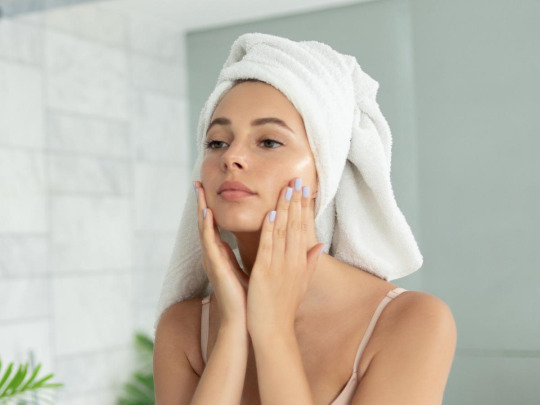
You’ve probably heard the term “holistic skincare” thrown around a lot lately—maybe from your favorite beauty blogger, that friend who’s all about clean living, or on one of those late-night Instagram scrolls. But what does it actually mean?
In a world where quick fixes, filters, and ten-step routines dominate the beauty space, holistic skincare invites us to pause. To breathe. To ask, “What’s really going on with my skin—and why?”
Holistic skincare isn’t just about what you put on your face. It’s about your whole lifestyle. The food you eat. The stress you hold. The sleep you skip. It’s about healing from the inside out, and nurturing your skin in a way that’s personal, mindful, and sustainable.
Let’s break it down—without the fluff—and figure out how you can start your own holistic skincare journey, even if you’re brand new to the concept of top care beauty.
What Exactly Is Holistic Skincare?
At its core, holistic skincare looks at the bigger picture. Instead of treating isolated symptoms like breakouts or dryness, it asks why those things are happening in the first place. Then, it treats those root causes through a blend of natural products, healthy habits, and emotional awareness.
It combines:
Clean topical care (using natural, non-toxic ingredients)
Nutrition (what you eat affects your skin more than you think)
Stress management
Sleep hygiene
Movement and circulation
Emotional balance
Basically, it’s less “miracle serum” and more “how are you actually doing?”
Why It Matters: Your Skin Reflects Your Life
Ever notice how your skin changes when you're sleep-deprived, stressed, or eating nothing but takeout? That’s not random. Your skin is your body’s largest organ and one of its loudest messengers.
Here’s what might be going on:
Dull skin? You might be dehydrated.
Breakouts around your jawline? Could be hormones or digestion.
Red, inflamed patches? Stress and diet often play a role.
A holistic routine doesn't ignore these signs. It listens—and then responds with care, not force.
Step-by-Step Guide to Starting a Holistic Skincare Routine
You don’t have to throw out all your products and buy a farm-to-face serum tomorrow. Small shifts matter. Here’s how to begin:
Step 1: Simplify Your Products
Start with fewer, better products. Focus on natural, gentle formulas without harsh chemicals, synthetic fragrances, or alcohol. Your skin barrier will thank you.
Essentials to include:
A non-stripping cleanser
A hydrating toner or mist (rosewater or green tea work wonders)
A nourishing facial oil or moisturizer
Sunscreen (daily, always)
Tip: If you love DIY, try integrating ingredients like raw honey, aloe vera, or rosehip oil. We’ve got plenty of easy recipes in our Natural Beauty Remedies guide.
Step 2: Rethink Your Diet
This isn’t about cutting everything “bad” or obsessing over kale. It’s about supporting your skin with what it needs: vitamins, antioxidants, and healthy fats.
Good-for-skin foods:
Avocados, olive oil, and seeds (for essential fatty acids)
Leafy greens, berries, and carrots (for antioxidants and vitamin A)
Water-rich fruits and veggies (for hydration)
And yes, drinking enough water really does help.
Step 3: Manage Stress (Without the Eye Roll)
Stress doesn’t just mess with your mind—it shows up on your face. Cortisol spikes oil production, slows healing, and can lead to everything from dullness to breakouts.
What helps:
Deep breathing or meditation (even five minutes)
Journaling before bed
Walking in nature or taking breaks from screens
Saying “no” more often
Step 4: Prioritize Sleep
There’s a reason they call it “beauty sleep.” While you rest, your body gets to work repairing cells, balancing hormones, and reducing inflammation. Skimping on sleep equals tired, puffy, or congested skin.
Try this: Create a wind-down ritual. Ditch screens 30 minutes before bed, sip herbal tea, or use lavender oil to signal your brain that it’s time to rest.
Step 5: Move Your Body
Exercise boosts blood flow, which helps nourish skin cells and carry away waste. You don’t need a gym membership—yoga, walking, dancing in your room—it all counts.
Bonus: Sweat naturally detoxifies your skin.
Bringing Top Care Beauty Into Your Routine
Holistic skincare may be rooted in tradition and self-awareness, but that doesn’t mean it can’t be practical. It’s all about top care beauty products—not just what looks good, but what feels good and supports long-term skin health.
Instead of chasing trends or miracle ingredients, focus on what works for your body and rhythm. Consistency > perfection, always.
Myths About Holistic Skincare (That Need to Go)
Let’s debunk a few ideas while we’re here:
Myth 1: Holistic skincare is only for hippies or wellness influencers.
Truth: It’s for anyone who wants to take a more mindful, less reactive approach to skin.
Myth 2: Natural means safe 100% of the time.
Truth: Natural ingredients can irritate too. Always patch test.
Myth 3: It’s expensive or time-consuming.
Truth: Often, it’s cheaper and simpler than complex routines.
A Sample Morning Routine to Try
Rinse with warm water or gentle cleanser
Spritz with rosewater
Apply aloe vera gel or light facial oil
Massage gently (don’t skip this—it boosts glow!)
Finish with SPF and a smile
How Holistic Skincare Changes More Than Your Skin
Here’s the wild thing—when you start treating your skin holistically, other parts of your life begin to shift too. You sleep better. You slow down. You get more in tune with your needs.
Skincare becomes less of a chore and more of a ritual. And when your skin feels cared for, you feel cared for.
Conclusion: Start With One Step, Stay Curious
Holistic skincare isn’t about doing everything at once. It’s about reconnecting—with your body, your breath, your boundaries. You don’t need the “perfect” routine. You just need to start.
Maybe today, it’s swapping a harsh cleanser for something soothing. Maybe tomorrow, it’s drinking an extra glass of water or going to bed 30 minutes earlier. These choices build on each other.
And over time? You’ll notice your skin glow in ways your old shelf full of products never quite managed.
Want more ways to bring natural beauty into your daily life? Check out our deep-dive on Natural Beauty Remedies and Holistic Skincare to get inspired.
Your skin’s story is personal. Let it unfold with care, curiosity, and love.
0 notes
Text
Aloe Vera, Honey, and Turmeric: Nature’s Skincare Heroes
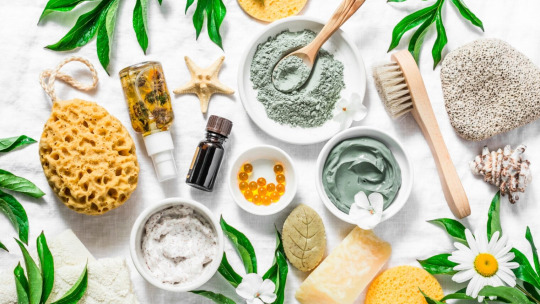
Let’s be honest—most of us have had that drawer full of half-used skincare products, right? The ones that promised glass skin but barely made a difference. Somewhere along the way, we forgot that skincare doesn’t have to be complicated—or synthetic—to work.
That’s where nature steps in. Sometimes, the simplest ingredients are the most powerful. Aloe vera, honey, and turmeric may sound like they belong in your kitchen, but they’ve earned a permanent spot in countless skincare routines for good reason. These three aren’t just old wives' tales—they’re backed by generations of wisdom and even modern science.
In this article, we’ll explore why these ingredients continue to dominate the world of top care beauty and how you can make the most of them without turning your routine into a full-time job.
Aloe Vera: The Ultimate Skin Soother
If your skin could talk, it would probably say “thank you” every time you apply aloe vera. Whether you’re sunburnt, dry, or just craving that soft, dewy feeling, this plant knows how to deliver.
What Makes It Special?
Hydration without heaviness: Aloe is almost 98% water. It sinks into the skin fast and doesn’t leave any greasy residue.
Soothing powers: Thanks to its anti-inflammatory compounds like acemannan and gibberellins, aloe calms redness and irritation in record time.
Healing boost: It helps regenerate damaged skin, which is why it's often used to treat burns and scars.
How to Use It:
Straight from the leaf (if you can get a fresh one), or go for 100% pure aloe gel with no added alcohol or dyes.
Use it post-cleanse as a hydrating serum or mix it with other ingredients for a custom mask.
Real Talk:
Even oily or acne-prone skin can benefit from aloe. It moisturizes without clogging pores—a rare combo in the skincare world.
Honey: Sweet Relief for Troubled Skin
Yes, it’s sticky. Yes, it’s delicious. But did you know honey is also a multitasking skincare miracle?
Why It Works:
Natural humectant: It draws moisture from the air into your skin, keeping it soft and supple.
Antibacterial powers: Particularly in raw or manuka honey, which helps treat acne and prevent breakouts.
Gentle exfoliation: Enzymes in honey help clear dead skin cells, revealing a brighter, smoother complexion.
How to Use It:
Apply a thin layer directly to clean skin and leave it on for 15–20 minutes.
Combine it with aloe for hydration or turmeric for brightening (more on that soon).
Pro Tip:
Always go for raw, unprocessed honey. The regular grocery-store squeeze bottle doesn’t have the same skin benefits.
Want more kitchen-to-skin secrets? Check out our favorite Natural Beauty Remedies and Holistic Skincare to learn how to create safe, effective treatments at home.
Turmeric: Brightening with a Bite
Turmeric may be trending now, but its skincare legacy goes back centuries—especially in South Asian beauty rituals. It’s not just about that signature golden glow; it’s about balance, clarity, and skin that feels healthier.
What Makes It a Hero:
Curcumin power: The active compound curcumin is a natural anti-inflammatory and antioxidant powerhouse. It reduces redness, fights bacteria, and helps lighten dark spots.
Evens skin tone: Used consistently, turmeric can help fade post-acne marks and hyperpigmentation.
Boosts natural glow: It gently revives dull skin and gives a natural radiance.
How to Use It:
Mix a small pinch (seriously, just a pinch!) with honey or yogurt for a brightening mask.
Leave it on for 10–15 minutes max—no longer, or you’ll risk a yellow tint.
Quick Caution:
Turmeric stains easily. Use an old towel and wash it off with lukewarm water. If your skin’s pale, stick to small amounts and patch-test first.
The Holy Trinity: Combining Aloe, Honey, and Turmeric
Separately, these ingredients shine. Together? They’re next-level.
Here’s a simple yet powerful mask to try when your skin is acting up:
DIY Glow Mask:
1 tablespoon pure aloe vera gel
1 teaspoon raw honey
1/8 teaspoon turmeric powder
Mix well, apply to clean skin, and leave on for 10–15 minutes. Rinse with warm water and pat dry. Use once or twice a week for consistent results.
This mask targets inflammation, hydrates deeply, and gives a noticeable glow—without the chemicals. It's a top care beauty favorite for good reason.
Holistic Skincare: It’s More Than Just a Mask
One-off masks are great, but real skin transformation happens when you look at the big picture. That means tuning into what your skin needs daily—not just when it’s irritated.
Your diet, stress levels, sleep, and environment all play a role. That’s why many skincare lovers are turning to a more intentional approach, blending external care with internal wellness.
Curious about going deeper? Our guide on Holistic Skincare explores how to support your skin naturally from the inside out.
Mistakes to Avoid with Natural Ingredients
Natural doesn't mean foolproof. Here are some common slip-ups to avoid:
Overusing turmeric: More is not better. Too much can stain or irritate.
Using poor-quality aloe or honey: Not all products are created equal. Check labels.
Skipping the patch test: Always test new combinations on a small area first.
Not staying consistent: One mask won’t fix your skin. Routine matters.
Conclusion: Trust Your Skin, Trust Nature
In a world of 12-step routines and buzzy product drops, it’s easy to feel overwhelmed by skincare. But sometimes, your skin just needs you to slow down and go back to basics.
Aloe vera, honey, and turmeric aren’t just ingredients—they’re centuries-old skin allies that continue to prove their worth. They’re simple, affordable, and incredibly effective when used right.
So whether you’re dealing with breakouts, dryness, or just feel like your glow is MIA, turn to these natural heroes. With patience, consistency, and a little mixing magic, your skin can absolutely thrive—without the noise.
And that’s the real secret to top care beauty—learning to care, not just cover.
0 notes
Text
How to Create a DIY Face Mask for Acne or Dryness?
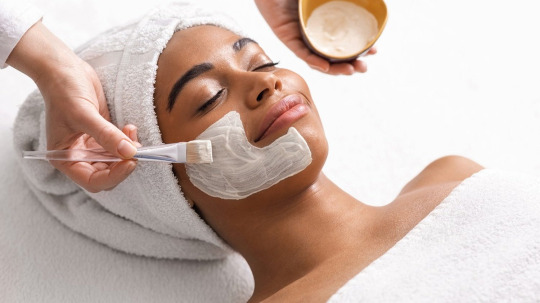
Let’s face it—most of us have been on both sides of the skin spectrum. One week, it’s dry and flaky like you just trekked across a desert. The next, it’s breaking out like a hormonal teenager. The good news? You don’t always need to run to the store or spend a fortune. Sometimes, the fix is already in your pantry.
Creating your face mask isn’t just about saving money. It’s about knowing exactly what’s going on in your skin. No chemicals you can’t pronounce, no preservatives, no hidden alcohols. Just real ingredients, blended with intention.
Whether you’re dealing with acne flare-ups or dry patches that won’t quit, this guide will walk you through how to create a customized DIY face mask that feels luxurious—but is grounded in simplicity and top care beauty principles.
Understanding Your Skin’s Mood: Acne vs. Dryness
Before you slap on a mask, it’s worth taking a minute to figure out what your skin needs.
Acne-prone skin often suffers from excess oil, clogged pores, inflammation, or bacteria buildup. Your goal? Calm, clarify, and gently detox.
Dry skin lacks moisture or oil—or both. It often feels tight, rough, or itchy. Your mission here is to soothe, nourish, and hydrate deeply.
Both types need care but in different directions. What works for one may completely backfire on the other.
For Acne-Prone Skin: The Calming Clay + Honey Mask
This combo is gentle yet effective. Clay pulls out impurities, while honey soothes and heals.
Ingredients:
1 tbsp bentonite or green clay
1 tsp raw honey (preferably manuka)
1 tsp cooled green tea or rose water
(Optional) 1 drop of tea tree oil
Instructions:
In a non-metal bowl, mix the clay and liquid until you get a spreadable paste.
Add honey and mix thoroughly.
Apply an even layer to clean the skin, avoiding the eye area.
Leave it on for 10–15 minutes—don’t let it dry completely. Spritz with rose water if needed.
Rinse off with lukewarm water and pat dry.
Why it works:
Clay draws out toxins and excess sebum, honey kills acne-causing bacteria, and tea tree (if used sparingly) helps fight active pimples. This combo is powerful, but not harsh.
For Dry Skin: The Avocado + Oatmeal Soothing Mask
This one feels like a smoothie for your face—and your skin will drink it up.
Ingredients:
¼ ripe avocado
1 tbsp finely ground oats
1 tsp plain yogurt or aloe vera gel
(Optional) ½ tsp olive oil or sweet almond oil for added richness
Instructions:
Mash the avocado until smooth.
Stir in oats and yogurt or aloe until you get a creamy texture.
Gently apply to your face in circular motions.
Let it sit for 15–20 minutes.
Rinse off with warm water and pat dry.
Why it works:
Avocado delivers essential fatty acids and vitamin E, oats soothe irritation, and yogurt provides gentle exfoliation plus probiotics. It’s like a cosy hug for dry, irritated skin.
Want more ideas like this? Check out our post on Natural Beauty Remedies and Holistic Skincare to explore more ways to treat skin using whole ingredients.
Tips for Getting the Most Out of Your DIY Mask
You could throw stuff in a bowl and hope for the best—but a little strategy goes a long way. Here’s how to make sure your DIY session works with your skin, not against it.
1. Always Patch Test First
Natural doesn’t mean risk-free. Test your mix on your jawline or wrist before slathering it on your whole face.
2. Don’t Overdo It
Even natural ingredients can irritate if used too often. Limit masks to 2–3 times a week, depending on how your skin responds.
3. Use Clean Tools
Wash your hands, use clean bowls and brushes, and don’t store leftovers—these masks are meant to be made fresh.
4. Follow Up with Hydration
Post-mask, your skin is in a prime spot to soak up hydration. Use a gentle toner, followed by a light moisturizer or facial oil.
Looking for an entire skincare ritual built on balance and intention? Head over to our guide on Holistic Skincare for a routine that nourishes you from the inside out.
Bonus: 2 Quick Variations for Targeted Concerns
• For Redness or Sensitivity
Try a mask made with cooled chamomile tea, aloe vera gel, and a drop of calendula oil. It’s perfect post-sun or after a breakout.
• For Dull Skin
Mix mashed banana with honey and a dash of turmeric. This brightens your complexion and smooths rough patches.
Common Mistakes to Avoid with DIY Masks
Even the most natural ingredient can go wrong if used incorrectly. Watch out for these:
Using citrus directly on the skin: Lemon might seem like a glow booster, but it can disrupt your skin’s pH and cause burns under sunlight.
Applying on dirty skin: Always cleanse before masking to allow better absorption.
Letting clay fully dry: That tight, cracking feeling? Not helping. Clay masks should stay damp for maximum benefit.
Conclusion: Skincare That’s Real, Simple, and Intentional
You don’t need to choose between luxury and clean beauty—sometimes, top care beauty lives right in your kitchen. Crafting a DIY face mask is about more than just pampering; it’s about tuning in to your skin and giving it what it needs when it needs it.
Whether you’re dealing with breakouts or battling winter dryness, these homemade masks offer you a gentle, effective, and honest approach to skincare. They’re not about perfection—but about progress, care, and connection to the ingredients we use.
So the next time your skin acts up, resist the urge to panic-buy another bottle. Instead, take a breath, open your fridge, and make something your face will thank you for.
0 notes
Text
Best Natural Ingredients for Glowing Skin
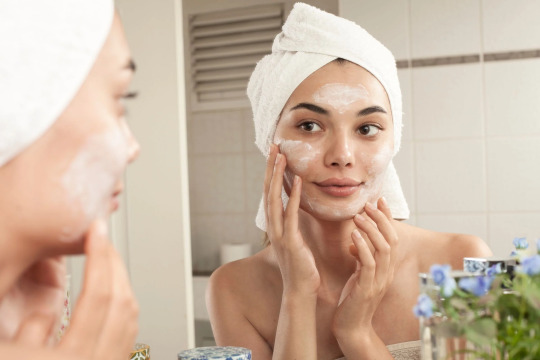
Everyone wants that radiant, lit-from-within glow—but let’s be real, filters can only do so much. The secret? Consistency and nature. While the skincare world keeps throwing synthetic formulas at us, there’s a refreshing shift back to roots: plant-powered, time-tested, skin-loving ingredients.
But here's the tricky part—just because something is "natural" doesn’t mean it works for everyone. Your skin has a personality of its own, and it deserves ingredients that respect that. Whether you’re dealing with dullness, or uneven tone, or just want to enhance your natural glow, this guide will walk you through the best natural ingredients that genuinely deliver results—without the hype.
Let’s dive into the world of top care beauty from nature’s pantry.
1. Turmeric – Nature’s Brightener
Turmeric isn't just for your golden latte—it’s been a skincare staple in Ayurvedic routines for centuries. Its active compound, curcumin, is known for its powerful anti-inflammatory and antioxidant properties. It helps even out skin tone, reduces blemishes, and adds that golden glow when used consistently.
How to use: Mix turmeric with honey and yogurt for a simple brightening face mask. Use only a pinch to avoid staining.
2. Aloe Vera – The Calming Hydrator
Aloe vera gel is a godsend for irritated or sun-damaged skin. Packed with vitamins A, C, and E, it soothes inflammation while hydrating deeply. It’s lightweight, non-comedogenic, and ideal for even the most sensitive skin types.
Real-life tip: Keep a fresh aloe leaf in your fridge. Slice it, scoop out the gel, and apply directly after cleansing.
3. Rosehip Oil – Liquid Gold for Glow
If your skin looks tired or uneven, rosehip oil can help. Rich in vitamin C and essential fatty acids, it supports collagen production and skin regeneration. It’s especially good for fading acne scars and smoothing fine lines.
Why it works: Rosehip oil absorbs quickly and nourishes from within—no heavy, greasy feel.
4. Honey – Your Skin’s Sweetest Friend
Raw honey (especially manuka honey) is a natural humectant, which means it draws moisture into the skin. It also has antibacterial and healing properties, making it excellent for acne-prone or dry skin.
Use it as: A 15-minute mask on clean, damp skin. It leaves your face plump, soft, and glowing.
5. Papaya – The Gentle Exfoliator
Papaya contains the enzyme papain, which gently dissolves dead skin cells and helps fade dark spots. It’s like nature’s chemical peel, without the irritation.
DIY glow-up: Mash ripe papaya and apply it to your face for 10–15 minutes once a week.
Want to go deeper into fruit-based beauty? Check out our guide on Natural Beauty Remedies for more simple, effective tips.
6. Green Tea – Antioxidant Armor
Green tea is more than a calming drink. When applied topically, its high EGCG content fights free radicals and reduces inflammation. It’s great for calming redness and boosting skin clarity.
Pro tip: Freeze brewed green tea in ice cube trays and use them to tone your face in the morning. It de-puffs and tightens instantly.
7. Jojoba Oil – The Balancer
Jojoba oil is incredibly similar to your skin’s natural sebum, which makes it excellent for regulating oil production. It hydrates without clogging pores and is loaded with vitamins E and B-complex.
Perfect for: Combination or oily skin that still craves nourishment without that heavy feeling.
8. Licorice Root – The Underrated Brightener
Often overlooked, licorice root extract is a powerhouse for fading hyperpigmentation and calming inflammation. It’s especially beneficial if you deal with melasma or sunspots.
Pair it with: A vitamin C serum or niacinamide for double the brightening effect.
9. Chamomile – Soft as a Whisper
Chamomile is best known for calming both your mind and your skin. It contains apigenin, which helps reduce redness, irritation, and inflammation.
Try this: Steep chamomile tea, let it cool, and use it as a toner or facial mist.
10. Sea Buckthorn – Glow in a Bottle
This bright orange oil is packed with omega-7 fatty acids, carotenoids, and antioxidants. It nourishes skin deeply, repairs damage, and enhances elasticity.
A little goes a long way: Just 2-3 drops mixed with your moisturizer can transform your skin’s texture over time.
Building Your Routine the Natural Way
The key to glowing skin isn’t layering 12 different ingredients—it’s understanding what your skin needs. And yes, sometimes, less is more. Start with one or two ingredients, give them time to work, and listen to your skin's response.
Here’s a sample top care beauty routine using natural ingredients:
Morning: Cleanse with honey → Tone with green tea → Moisturize with aloe vera gel → Sunscreen
Night: Remove makeup → Cleanse → Apply rosehip or jojoba oil → Optional: papaya mask (2x/week)
Want to fully embrace a plant-powered routine? Explore our resource on Holistic Skincare to support your skin from the inside out.
Conclusion: Nature Knows Best (Usually)
Glowing skin isn’t about chasing trends or hoarding products—it’s about choosing ingredients that make sense for you. The natural world is full of powerful, gentle solutions that our ancestors swore by for a reason. Whether you’re team turmeric, obsessed with oils, or just dipping your toes into clean beauty, the journey to radiant skin can be as simple as going back to the basics.
So skip the overwhelm. Start small, stay consistent, and glow naturally—with a little help from top care beauty ingredients that have stood the test of time.
0 notes
Text
Natural Beauty Remedies and Holistic Skincare
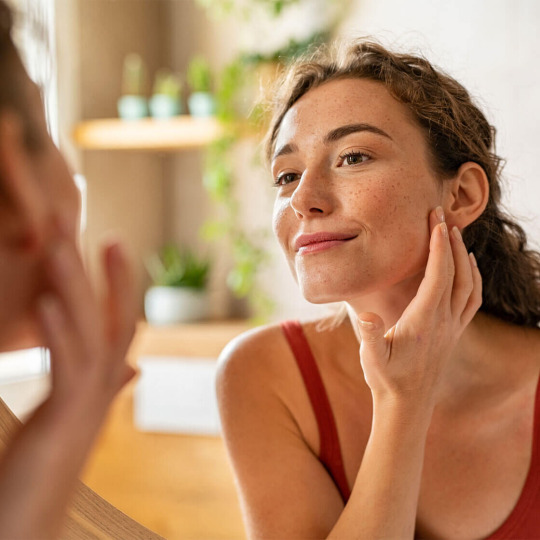
Key Takeaways
Natural beauty remedies are gaining popularity due to consumer demand for cleaner, safer ingredients.
Rare botanical ingredients such as bakuchiol, blue tansy, and wild-harvested sea buckthorn are driving value and curiosity in the holistic skincare market.
Holistic skincare approaches, which consider mind, body, and skin health as one system, are becoming central to consumer wellness routines.
The market is shifting from synthetic-heavy formulas to plant-based, cruelty-free, and transparent skincare brands.
Trends show a rise in indie brands, DIY skincare, and an emphasis on mental well-being alongside outer radiance.
Introduction: Nature Is Back, But It’s Not What It Used To Be
If you’ve spent any time scrolling through beauty TikTok or browsing the skincare aisle lately, you’ve probably noticed something: nature is having a moment again. But this isn’t the same as the flower-crown, coconut-oil-for-everything phase that took over Instagram in 2015. Today’s revival of natural skincare is more sophisticated, more conscious, and, surprisingly, far more science-backed than ever before.
What we’re witnessing is a significant shift in the beauty world—one where skincare is no longer just about surface-level glow. Consumers are getting smarter, more ingredient-savvy, and more emotionally connected to their routines. The former obsession with 10-step regimens, harsh exfoliants, and overly aggressive active ingredients is slowly losing its shine. Instead, a new wave of users is embracing what some call “slow beauty”—a mindset focused on nurturing the skin rather than attacking it with activities.
This new approach is rooted in intention. People want skincare that aligns with their values: products that are safe, ethical, and environmentally respectful. But it’s not just about being “green” for the sake of it. There’s a growing demand for efficacy too—real results powered by nature’s finest and rarest resources. Ingredients like bakuchiol, blue tansy, sea buckthorn, and adaptogenic herbs are gaining traction not because they’re trendy, but because they work. Backed by tradition, folklore, and increasingly, peer-reviewed studies, these botanicals are redefining what effective skincare looks like.
And it doesn’t stop at ingredients. Holistic skincare takes into account the entire lifestyle—your sleep, stress levels, diet, and even your emotional state. It’s the idea that your skin reflects your overall well-being. In this sense, skincare becomes more than just self-care—it becomes self-awareness.
So, as we dive into the fascinating world of natural beauty remedies and holistic skincare, we’re not just talking about slathering on face oils or sipping herbal tea. We’re talking about a cultural transformation. A return to roots, yes—but with modern knowledge, better tools, and a collective desire for mindful beauty that makes sense. Let’s explore what’s behind this movement and what it means for your daily ritual.
What Exactly Is Holistic Skincare?
Holistic skincare is more than just switching to products with a “natural” label. It’s a comprehensive, whole-body approach to skin health that considers the physical, emotional, and even spiritual factors that influence your skin. At its core, holistic skincare recognizes that your complexion isn’t just a reflection of what you put on your face—it’s a mirror of everything happening inside your body and mind.
This philosophy shifts the focus from quick fixes to long-term wellness. It encourages you to treat the root cause of skin concerns rather than just covering up the symptoms. That’s why holistic skincare often involves lifestyle changes, mindfulness practices, and gentle, plant-powered ingredients that work in harmony with your body—not against it.
Some of the common elements in a holistic routine include:
Nutrient-dense, plant-based products that avoid harsh chemicals, synthetic dyes, and artificial fragrances.
Techniques like facial massage, gua sha, lymphatic drainage, and breathwork, support circulation and relaxation.
Mindful habits such as getting enough sleep, managing stress, staying hydrated, and eating skin-supportive foods rich in antioxidants, omega-3s, and vitamins.
Avoiding common irritants like sulfates, parabens, and chemical preservatives that may disrupt the skin barrier or hormone balance.
Holistic skincare is also highly individualized. What works for one person may not work for another, and that’s okay. This approach invites you to slow down, tune into your body’s signals, and build rituals that nourish both skin and spirit.
In essence, holistic skincare is not just about achieving clear, glowing skin—it’s about creating a lifestyle that supports your skin’s natural rhythm. It’s a gentle reminder that true beauty radiates from a place of balance, inner calm, and conscious self-care.
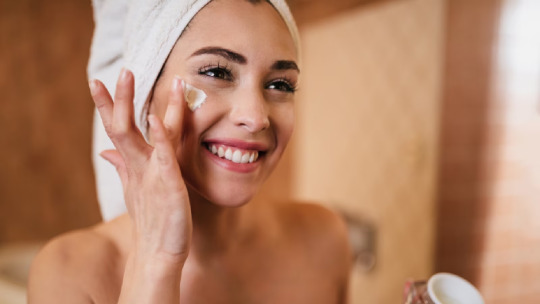
The Rise of Rare Ingredients: What Makes Something Valuable?
In the ever-evolving world of skincare, buzzwords come and go—but certain ingredients have staying power. You’ve probably seen names like bakuchiol, blue tansy, and kakadu plum popping up repeatedly in product descriptions. These aren’t just marketing gimmicks. They’re part of a broader shift toward high-performance botanicals—ingredients that aren’t just “natural,” but rare, potent, and backed by growing scientific interest.
So, what exactly makes a skincare ingredient “rare” or “valuable”? It's usually a mix of factors:
Limited Geographic Growth Zones: Some botanicals can only grow in specific climates, such as blue tansy, which thrives primarily in Morocco.
Labor-Intensive Harvesting: Certain plants need to be handpicked or harvested under very specific conditions, especially wildcrafted herbs.
Seasonal or Climate Dependency: Plants that bloom once a year, or that depend on delicate ecological conditions, aren’t always available in bulk year-round.
Complex Extraction or Processing: Oils and actives that require cold-pressing, fermentation, or steam distillation in small yields naturally command higher value.
Let’s break down a few of the rare ingredients that are reshaping what we consider “luxury” in skincare—many of which are earning their reputations not through hype, but through efficacy.
1. Bakuchiol – The “Natural Retinol”
Derived from the seeds and leaves of the Psoralea corylifolia plant (commonly known as Babchi), bakuchiol has become a hero ingredient for those looking to smooth fine lines and refine skin texture without the flakiness or irritation often caused by traditional retinoids.
What makes it so valuable? It offers the collagen-boosting, anti-aging benefits of retinol—without increasing photosensitivity or triggering redness. This makes it a favorite among people with sensitive skin or those with conditions like rosacea or eczema who can’t tolerate retinoids. As demand grows for gentler alternatives, bakuchiol continues to hold its ground as a proven botanical powerhouse.
2. Blue Tansy – Soothing & Stunning
If you’ve ever tried a luxury calming oil or mask and noticed a beautiful indigo-blue hue, that’s likely blue tansy. Extracted from Tanacetum annuum, this flower is known for its anti-inflammatory and antibacterial properties, making it a favorite for acne-prone or reactive skin.
Blue tansy’s rareness comes down to yield and location. It grows mainly in Morocco and requires steam distillation of thousands of flowers to extract a small amount of essential oil. As a result, it’s expensive—but its ability to calm flare-ups and soothe skin makes it worth the investment for many.
3. Sea Buckthorn Berry Oil – The Omega Powerhouse
Bright orange and brimming with nutrients, sea buckthorn berries grow in high-altitude regions of Asia and parts of Europe. They’re one of the only plant sources that offer all four omega fatty acids: 3, 6, 7, and 9. That makes sea buckthorn oil intensely nourishing, especially for dry, aging, or damaged skin.
Its rarity lies in the harvesting process. The berries are delicate and often hand-picked. Additionally, extracting the oil without damaging its bioactive compounds takes precision. The result? A richly pigmented oil that promotes skin regeneration, elasticity, and deep hydration.
4. Kakadu Plum – Vitamin C Royalty
Native to the northern regions of Australia, kakadu plum boasts the highest recorded natural concentration of vitamin C—up to 100 times more than oranges. This makes it an ultra-effective ingredient for brightening, evening skin tone, and boosting collagen production.
Its value comes from both its nutrient density and its environmental limitations. Harvesting is often done by Indigenous communities during a brief seasonal window, and the fruit must be processed quickly to preserve its actives. This combination of cultural heritage, sustainability, and potency makes it one of the most sought-after ingredients in the clean beauty space.
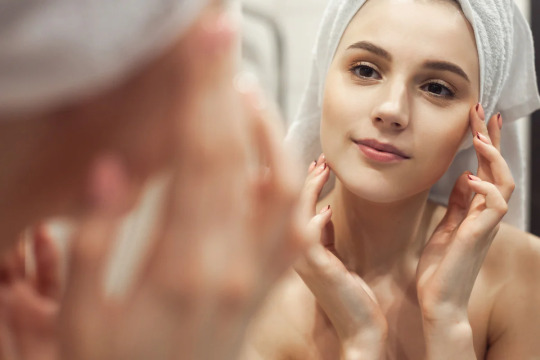
More Than Just Exotic Names
These ingredients aren’t just about novelty—they reflect a larger movement within skincare. Today’s consumers are looking for fewer, smarter ingredients that deliver real benefits. And they’re willing to pay for authenticity, ethical sourcing, and formulations that respect both nature and skin.
Rare botanicals like these challenge the idea that you need a long list of lab-derived chemicals to see results. They prove that with the right knowledge, traditional remedies and modern science can work beautifully together. That’s the future of skincare—and it smells like blue tansy.
Consumer Mindset: Why Are People Ditching Synthetics?
More and more, shoppers are questioning what’s inside their skincare. Parabens, PEGs, phthalates, and synthetic dyes are being scrutinized not just for what they do to skin, but for their potential impact on hormone health, the environment, and long-term wellness.
There’s a deepening mistrust of overly manufactured ingredients. People are tired of hidden chemicals and complex formulas they can’t pronounce. This shift is particularly evident among Gen Z and millennial buyers, who are:
Reading ingredient labels more carefully
Demanding brand transparency
Prioritizing sustainability and cruelty-free ethics
It’s not just about “natural”—it’s about consciousness.
Holistic Trends to Watch
The beauty industry is evolving fast. Here’s what’s currently shaping the holistic skincare market:
1. Skin Minimalism (a.k.a. Skinimalism)
People are cutting down on product overload. Fewer, better-quality products with multiple benefits are in demand. Think all-in-one facial oils and multi-use balms.
2. DIY Skincare
From kitchen-made face masks to herbal infusions and tinctures, consumers are embracing make-it-yourself beauty. It’s cost-effective, transparent, and deeply personal. But it also comes with risks if ingredients aren’t handled properly.
3. Mind-Skin Connection
Stress, sleep, and mood play a huge role in skin health. Brands are launching products infused with adaptogens (like ashwagandha), nootropics, and aromatherapeutic blends to address inner and outer wellness.
4. Biotech Botanicals
Interestingly, science is meeting nature halfway. Biotech advancements are allowing brands to sustainably create lab-grown versions of rare actives, reducing environmental impact without compromising on purity.
5. Ayurveda and Traditional Medicine Revival
Ancient remedies from Indian, Chinese, and Indigenous traditions are resurfacing in modern formulations. Turmeric, neem, ginseng, liquorice root, and fermented rice water are having their renaissance moments.
Market Trends: The Business Behind the Botanicals
The global natural and organic skincare market is booming. In 2024, it surpassed $13 billion, and projections suggest it could double by 2030.
Some of the fastest-growing segments include:
Organic facial care (especially serums and oils)
Vegan and cruelty-free beauty
Gender-neutral or unisex formulations
Skincare for sensitive or reactive skin
Big retailers are adapting fast. Even mainstream stores are carving out shelf space for “clean” sections. Indie brands are gaining ground through social proof, influencer endorsements, and authenticity.
Brands like Herbivore Botanicals, Tata Harper, and True Botanicals have disrupted the space by focusing on transparency and lush, plant-forward formulas.
And then there’s Topcare Beauty, a rising favorite for consumers seeking both quality and accessibility in natural skincare. By blending affordability with performance, Topcare Beauty has carved a niche among everyday buyers who want a gentle but effective clean-beauty experience.
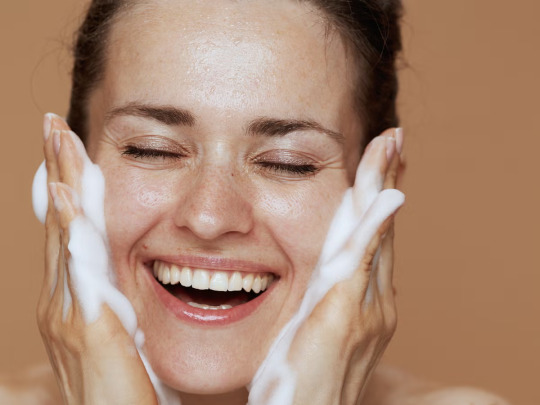
Challenges Facing the Natural Skincare Industry
Despite the growth, the industry isn’t without its hurdles:
Greenwashing: Brands mislabeling products as “natural” or “organic” without proper certifications.
Sourcing ethics: Overharvesting and unsustainable farming practices can threaten biodiversity.
Shelf stability: Natural products often lack preservatives, which can reduce shelf life.
Education gap: Many consumers still don’t understand ingredient interactions or how to properly store or layer natural products.
This is where trustworthy brands and informed consumers make all the difference.
How to Tell If a Product Is Truly Holistic
Want to avoid getting duped by pretty labels and marketing buzzwords? Here’s what to look for:
Clear, simple ingredient lists
Certifications (USDA Organic, COSMOS, Ecocert)
Transparent sourcing info
No hidden “fragrance” blends or dyes
Cruelty-free badges
Minimal but effective formulations
Bonus tip: Follow your nose. If it smells overly sweet or perfumey, it’s probably loaded with synthetics.
Conclusion: It’s Not Just About Looking Good
The future of skincare isn’t only about youthful skin—it’s about feeling whole. Consumers are waking up to the reality that what you put on your face matters just as much as what you put in your body, and even how you treat your mental space.
From rare botanicals to ancient rituals, holistic beauty isn’t about perfection—it’s about harmony. Whether you’re a seasoned oil-cleansing devotee or just getting curious about calendula, there’s never been a better time to explore what natural skincare can offer. Just remember: nature may be powerful, but it’s not always gentle. Go slow, listen to your skin, and always stay curious.
Topcare Beauty and brands like it are making this journey more accessible than ever.
FAQs
1. Are natural skincare products better than synthetic ones? Not always. It depends on your skin type and the formulation. Some natural ingredients can be irritating, just like synthetic ones. It's all about balance and quality.
2. What makes an ingredient “rare” in the beauty world? Limited availability, difficult extraction, regional exclusivity, and seasonal constraints all contribute to rarity.
3. Can I do my holistic skincare at home? Yes! But research is key. Some ingredients can spoil or cause reactions if not used properly. Start simple and patch-test everything.
4. What should I avoid in natural skincare? Fragrance blends, alcohol-heavy formulas, and unregulated claims. Also, be wary of essential oils used at high concentrations.
5. How long does it take to see results from natural skincare? It depends on your skin and the product. Expect visible changes in 4–8 weeks, though some may see improvements sooner.
0 notes
Text
Key Nutrients In Prenatal Gummies Every Mom Should Know

Prenatal gummies are packed with key nutrients essential for a healthy pregnancy. These include folic acid for neural tube development, iron to prevent anemia, DHA for baby’s brain growth, and vitamin D for bone strength. They also provide iodine for thyroid support and B vitamins for energy. These nutrients help support both mom’s and baby’s health throughout pregnancy.
0 notes
Text
Multivitamins and hormone balance in women
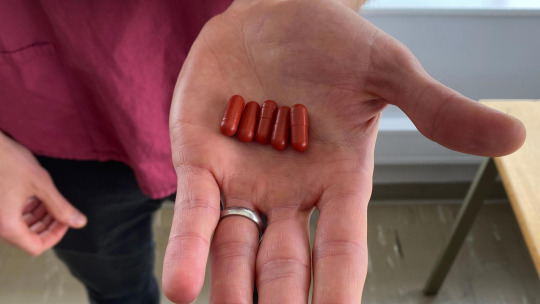
Hormones play a critical role in a woman’s overall health, influencing everything from mood and metabolism to reproductive health and energy levels. When hormones become imbalanced—whether due to stress, poor diet, age, or other health conditions—women can experience a range of symptoms, including fatigue, mood swings, irregular cycles, and weight changes. While lifestyle factors like exercise, sleep, and stress management are essential, nutrition is often a key piece of the puzzle. A high-quality multivitamin womens supplement can support hormonal balance by providing the essential nutrients required for optimal endocrine function.
1. The Nutritional Link to Hormonal Health
Hormones are chemical messengers produced by glands such as the thyroid, adrenal glands, and ovaries. These glands require specific vitamins and minerals to function properly. When the body lacks these nutrients, hormone production and regulation can be disrupted. That’s where a multivitamin womens product can be helpful—it fills nutritional gaps that might otherwise affect hormone health.
2. Key Nutrients for Hormonal Balance
Several key nutrients found in a multivitamin womens formula are known to support hormone regulation:
Vitamin B6: This vitamin is particularly important for regulating mood-related hormones like serotonin and dopamine. It also plays a role in balancing estrogen and progesterone, making it helpful for women experiencing PMS or menopausal symptoms.
Vitamin D: Often referred to as a pro-hormone, vitamin D supports the endocrine system and is essential for the regulation of sex hormones, including estrogen. Many women are deficient in vitamin D, which may contribute to hormonal imbalances and mood issues.
Magnesium: Magnesium supports adrenal health and the production of hormones like cortisol, which helps the body manage stress. It also contributes to healthy insulin function, helping regulate blood sugar levels—an important factor in hormone balance.
Zinc: This trace mineral supports reproductive hormones and is vital for thyroid function. Zinc also plays a role in ovulation and maintaining proper levels of progesterone.
Iodine: Iodine is necessary for the production of thyroid hormones. Since thyroid imbalance is common in women, especially after pregnancy or during menopause, iodine in a multivitamin womens supplement can help support metabolic and hormonal stability.
3. Hormonal Shifts Throughout Life
Women go through various hormonal phases—puberty, menstruation, pregnancy, postpartum, and menopause. Each stage has unique nutritional demands. A tailored multivitamin womens formula can provide ongoing support by ensuring the body has the vitamins and minerals it needs to adapt to these changes more smoothly.
4. Supporting Natural Balance
While multivitamins don’t replace professional medical treatment for serious hormonal disorders, they can be a helpful daily tool for maintaining balance naturally. By nourishing the body with essential nutrients, a multivitamin womens supplement supports the hormonal systems and helps reduce the likelihood of imbalances caused by nutritional deficiencies.
Conclusion
Hormonal balance is essential for a woman’s physical, mental, and emotional well-being. A carefully formulated multivitamin womens product can be an important ally in supporting this balance, especially when combined with a healthy diet and lifestyle. By addressing the nutritional foundations of hormone production and regulation, women can feel more balanced, energized, and in control of their health.
0 notes
Text
Benefits of B-complex in women's multivitamins

B-complex vitamins play a crucial role in maintaining overall health, especially for women. These water-soluble vitamins are often included in a multivitamin womens formula to support energy production, metabolism, hormonal balance, and nervous system function. B-complex typically includes eight essential vitamins: B1 (thiamine), B2 (riboflavin), B3 (niacin), B5 (pantothenic acid), B6 (pyridoxine), B7 (biotin), B9 (folic acid), and B12 (cobalamin). Each of these vitamins contributes uniquely to various aspects of women’s health.
1. Energy and Metabolism Support One of the primary reasons B-complex is included in women's multivitamins is its vital role in converting food into energy. B1, B2, B3, B5, and B6 help the body metabolize carbohydrates, fats, and proteins. Women with demanding schedules, active lifestyles, or increased stress levels often need consistent energy throughout the day. A multivitamin womens supplement containing a full B-complex can support this energy production naturally and efficiently.
2. Hormonal and Mood Balance B vitamins, especially B6 and B12, are essential for producing neurotransmitters such as serotonin and dopamine, which regulate mood. Women experiencing hormonal shifts due to menstruation, pregnancy, or menopause may find B-complex vitamins beneficial for emotional well-being. Low levels of these vitamins can contribute to symptoms of mood swings, irritability, and even mild depression.
3. Cardiovascular Health Folic acid (B9), vitamin B6, and vitamin B12 work together to reduce homocysteine levels in the blood. Elevated homocysteine is a risk factor for heart disease, a condition that women are increasingly susceptible to as they age. Including these B vitamins in a multivitamin womens regimen can support heart health by promoting healthy circulation and reducing cardiovascular risk.
4. Hair, Skin, and Nail Health Biotin (B7) is widely recognized for promoting healthy hair, skin, and nails. It plays a key role in the formation of keratin, a protein that makes up these tissues. Women who experience thinning hair or brittle nails may benefit from additional biotin through a daily multivitamin.
5. Nervous System Function The nervous system relies heavily on B vitamins for maintenance and repair. Thiamine (B1), niacin (B3), and cobalamin (B12) are essential for proper nerve signaling and brain function. Women facing high-stress environments or aging-related cognitive concerns may find support from a B-complex-rich multivitamin womens product.
6. Pregnancy and Fetal Development Folic acid is especially important for women of childbearing age. Adequate levels before and during pregnancy help prevent neural tube defects in the developing fetus. For this reason, folic acid is a standard ingredient in prenatal multivitamins and is often included in regular multivitamin womens formulas to support reproductive health.
Conclusion B-complex vitamins are essential for many biological processes that directly affect women's health. From energy and mood to cardiovascular protection and beauty benefits, these vitamins contribute to daily wellness in meaningful ways. Including B-complex in a multivitamin womens formula ensures that women receive balanced support tailored to their unique needs, making it a smart and effective addition to a healthy lifestyle.
0 notes
Text
Drug Interactions to Avoid When Using Lidocaine Patches
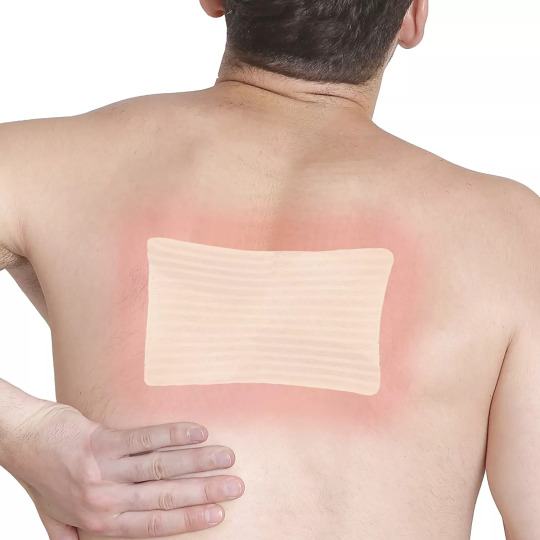
The lidocaine pain patch is a commonly used topical treatment that provides effective, localized relief for various types of pain, including nerve pain, muscle aches, and joint discomfort. While it is applied directly to the skin and is generally considered safe, it still contains an active medication—lidocaine—that can be absorbed into the bloodstream in small amounts. This means that there is potential for interactions with other medications, particularly when used improperly or for extended periods. Understanding these interactions is essential to ensure safe and effective use.
1. Antiarrhythmic Medications (Class I and III)
Lidocaine is itself a type of antiarrhythmic drug, used to treat irregular heartbeats in some clinical settings. When used in conjunction with other antiarrhythmic drugs, such as mexiletine, amiodarone, or quinidine, the combined effects may impact heart rhythm and electrical conduction. This can potentially lead to heart-related side effects like bradycardia (slow heart rate), dizziness, or in rare cases, more serious arrhythmias. If you are already on these types of medications, it’s important to speak with your healthcare provider before using a lidocaine pain patch.
2. Beta Blockers
Beta blockers such as propranolol and metoprolol are commonly used to treat high blood pressure, heart disease, and migraines. These medications can reduce liver metabolism, potentially increasing blood levels of lidocaine if used concurrently. Even though lidocaine patches are topical, excessive or prolonged use may lead to systemic absorption, and interactions with beta blockers could enhance the sedative or cardiac effects of lidocaine.
3. Cimetidine and Other Liver-Enzyme Inhibitors
Cimetidine (commonly used for acid reflux) and other medications that inhibit the liver enzyme CYP1A2 or CYP3A4 can slow the breakdown of lidocaine in the body. This can lead to elevated lidocaine levels and a higher risk of side effects. Though this risk is more pronounced with injectable forms of lidocaine, consistent use of a lidocaine pain patch alongside these inhibitors could still contribute to systemic effects.
4. Anti-Seizure Medications
Drugs like phenytoin and carbamazepine can alter lidocaine’s effects in the body. Some anti-seizure medications may decrease lidocaine’s effectiveness, while others could increase its levels by affecting liver enzymes. Always consult a healthcare provider if you're using these medications and considering a lidocaine pain patch for ongoing pain relief.
5. Sedatives and CNS Depressants
Using a lidocaine pain patch with sedatives, alcohol, opioids, or other central nervous system depressants may enhance drowsiness, confusion, or dizziness. Lidocaine itself can have mild sedating effects when absorbed in significant amounts, so combining it with similar-acting substances may amplify these reactions, particularly in sensitive individuals.
Conclusion
Though the lidocaine pain patch is primarily a localized treatment with minimal systemic involvement, certain medications can interact with it, especially when patches are overused or used improperly. Being aware of potential drug interactions and consulting a healthcare provider before combining treatments is the best way to ensure safe and effective pain relief. Proper use and monitoring will help maximize the benefits of lidocaine patches while minimizing potential risks.
0 notes
Text
When to Stop Using a Lidocaine Patch
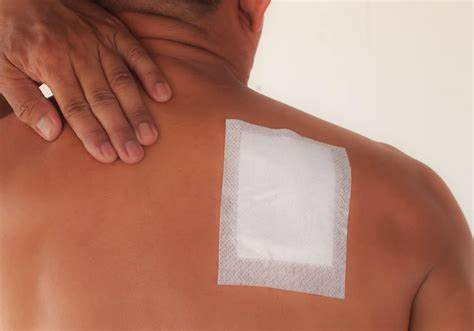
The lidocaine pain patch is a valuable tool for managing localized pain. It offers targeted relief by numbing the nerves in a specific area, making it an excellent option for conditions like backaches, arthritis, nerve pain, and muscle soreness. When used correctly, it can help you stay active, rest comfortably, and improve your quality of life. However, just like any pain relief method, there comes a time when you may need to reconsider its continued use. Knowing when to stop using a lidocaine patch ensures you maintain both effectiveness and safety in your pain management routine.
1. Your Pain Has Improved or Resolved
One of the most positive signs that it's time to stop using a lidocaine pain patch is simply that your pain has lessened or gone away. These patches are not meant for indefinite use unless advised by a healthcare provider. If the underlying condition has healed or improved with time, rest, and support, discontinuing the patch can help your skin recover and give your body a chance to function without external aid.
2. You’ve Found Alternative Relief Strategies
Pain management is often most effective when approached from multiple angles. If physical therapy, stretching, massage, or other treatments have begun to provide relief, you might be able to reduce your reliance on the lidocaine pain patch. Combining treatments can help improve mobility and strengthen muscles, making long-term dependence on topical medications less necessary.
3. You’re Experiencing Skin Irritation
Although most people tolerate the lidocaine pain patch well, some may experience mild skin irritation such as redness, itching, or dryness at the application site. If these symptoms persist or worsen, it may be time to take a break or stop using the patch altogether. Giving your skin a rest can prevent further irritation and allow you to switch to alternative forms of pain relief if needed.
4. You’ve Reached the Recommended Usage Limit
Most lidocaine patches are meant to be worn for up to 12 hours, followed by 12 hours off. If you've been using them daily for an extended period, it’s wise to take a pause and evaluate the long-term plan with your healthcare provider. Extended or excessive use can lead to skin sensitivity or reduce the effectiveness over time, making scheduled breaks a healthy habit.
5. Your Doctor Recommends a Change in Treatment
A healthcare professional may suggest stopping the lidocaine pain patch if your condition changes or if they believe another treatment may be more effective. This doesn't mean the patch has failed—it simply reflects a personalized approach to managing your health. Staying open to adjustments ensures that you’re always getting the most benefit from your treatment plan.
Conclusion
Stopping the use of a lidocaine pain patch doesn’t have to be viewed as a setback. In fact, it often signals progress—whether your pain has improved, your body is ready for new treatments, or your skin needs a short break. By listening to your body, following usage guidelines, and working closely with your healthcare provider, you can make the best decisions for safe, effective, and long-term pain relief.
0 notes
Text
Skin Reactions to Lidocaine Patches: What to Watch For
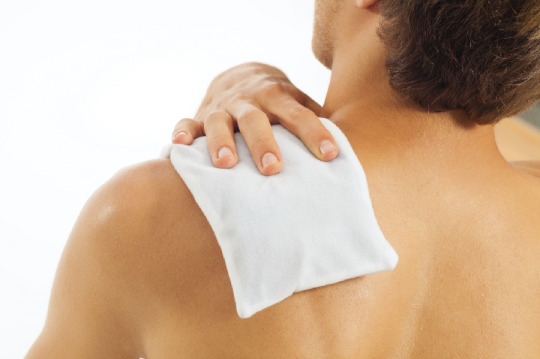
Lidocaine pain patches are widely used for managing localized pain by delivering a topical anesthetic to the affected area. They are especially helpful for conditions like nerve pain, backaches, or arthritis-related discomfort. While these patches are generally safe and effective, users should be aware of possible skin reactions, which can vary from mild irritation to more serious conditions.
Mild Skin Irritation The most common reaction to a lidocaine pain patch is mild skin irritation at the site of application. This can include redness, itching, or a slight burning sensation. These symptoms are usually temporary and often occur when the patch is first applied or removed. The skin may feel sensitive or appear slightly inflamed, but these effects usually resolve within a few hours without the need for medical treatment.
Dryness and Flaking Another frequent reaction is skin dryness or flaking after repeated use of the patch. Lidocaine and the adhesives used in the patch can sometimes cause the skin to lose moisture, leading to dryness, scaling, or rough texture. To minimize this, users can gently cleanse and moisturize the area after removing the patch, ensuring the skin stays hydrated and intact.
Allergic Contact Dermatitis Some individuals may develop an allergic skin reaction, known as contact dermatitis. This condition can appear as red, itchy, swollen skin with blistering or a rash. These symptoms usually do not go away on their own if the cause of the allergy continues. If someone using a lidocaine pain patch begins to notice worsening redness, itchiness that spreads, or the formation of fluid-filled blisters, they should stop using the patch and consult a healthcare provider.
Skin Discoloration or Bruising In some cases, the skin under or around the lidocaine pain patch may appear discolored—either darker or lighter than the surrounding area. This discoloration is often harmless and fades with time but can be concerning if persistent. Rarely, repeated use on the same spot may cause bruising due to sensitivity or minor irritation from the adhesive.
Burns and Severe Reactions Although rare, there have been reports of burns or more severe skin injuries from lidocaine patches, especially when exposed to external heat sources like heating pads or electric blankets. Heat increases lidocaine absorption, which can lead to higher concentrations in the skin and potentially cause burns or systemic effects. Therefore, it’s crucial not to apply heat to areas where a lidocaine patch is in use.
How to Prevent or Manage Skin Reactions To minimize skin reactions, rotate the patch application sites and avoid applying to irritated or broken skin. Clean and dry the area thoroughly before application, and do not use lotions or creams underneath the patch. After removal, wash the area with mild soap and water to remove any residue.
In conclusion, while the lidocaine pain patch offers effective pain relief, it’s important to monitor the skin for any unusual changes. Understanding the types of reactions and knowing how to prevent or manage them can help ensure the patch is both safe and beneficial.
0 notes
Text
Are Generic Lidocaine Patches Just as Good?
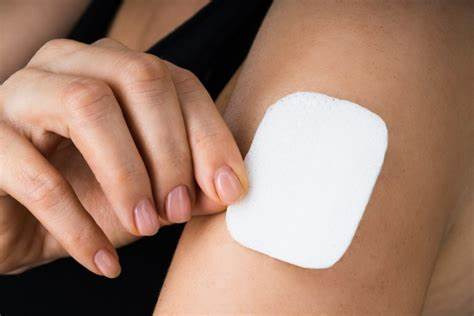
When it comes to managing localized pain, the lidocaine pain patch is a trusted option for many people seeking relief from nerve pain, muscle soreness, or arthritis. While branded lidocaine patches have long dominated the market, generic versions are increasingly popular because of their lower cost. However, some individuals wonder whether generic lidocaine patches are just as effective and safe as their brand-name counterparts. In this blog, we’ll explore the key differences and similarities between generic and branded lidocaine patches to help you make an informed choice.
What Is a Generic Lidocaine Patch?
A generic lidocaine patch contains the same active ingredient—lidocaine—at a similar concentration as branded products, typically around 5%. The main difference lies in the manufacturer and potentially in the inactive ingredients, such as adhesives or fillers. Generic patches must meet the same regulatory standards as branded ones, ensuring they deliver the same therapeutic effect.
Effectiveness: Do Generic Patches Work the Same?
The active ingredient lidocaine in both generic and branded patches works by blocking nerve signals in the skin, providing localized numbness and pain relief. Regulatory bodies require generic patches to prove bioequivalence, meaning they must release lidocaine into the skin at the same rate and extent as branded versions. Because of this, generic lidocaine pain patches generally offer comparable effectiveness in managing pain.
Many users report similar pain relief experiences with generics as they do with branded patches. However, subtle differences in the patch design or adhesives may affect how well the patch sticks to the skin or how comfortable it feels during wear.
Safety and Quality Concerns
Generic lidocaine patches are required to meet strict quality, safety, and manufacturing standards. This ensures they contain the proper amount of active ingredient and are safe for use according to directions. However, because inactive ingredients can vary, some people may experience different skin reactions, such as mild irritation or allergy, depending on the brand or generic formulation.
If you have sensitive skin or have previously experienced irritation from lidocaine patches, it might be helpful to try a small area first with a new generic product to ensure tolerance.
Cost and Accessibility
One of the main advantages of generic lidocaine patches is cost savings. They are often significantly less expensive than brand-name patches while providing the same level of pain relief. For patients managing chronic pain conditions, this cost difference can make consistent treatment more affordable and accessible.
Patient Preferences and Perception
Sometimes, patient perception plays a role in choosing between generic and branded products. Some individuals may prefer branded patches due to familiarity or trust, while others appreciate the affordability of generics. It’s important to remember that both options are equally valid and effective when used as directed.
Final Thoughts
Generic lidocaine pain patches offer an effective, safe, and affordable alternative to branded products. With the same active ingredient and similar regulatory standards, generics provide comparable pain relief for localized conditions like nerve pain or arthritis. While minor differences in adhesives or inactive ingredients may exist, most users find them equally beneficial.
If you’re considering switching to a generic lidocaine patch or starting treatment for the first time, consult with a healthcare professional. They can guide you in choosing the most suitable option based on your pain condition, skin sensitivity, and budget. Ultimately, whether you choose a generic or branded lidocaine patch, the goal remains the same: targeted, effective pain relief to improve your quality of life.
0 notes
Text
Long-Lasting vs Short-Term Lidocaine Patches
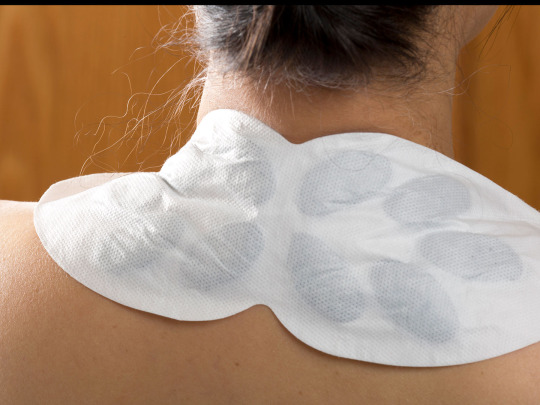
When it comes to managing localized pain, many people turn to the lidocaine pain patch for its ability to provide targeted relief without the systemic effects of oral medications. Lidocaine patches come in various formulations designed to suit different pain needs, mainly categorized as long-lasting and short-term patches. Understanding the differences between these two types can help individuals choose the most effective option for their pain management.
What Are Long-Lasting Lidocaine Patches?
Long-lasting lidocaine patches are designed to deliver the medication steadily over an extended period, usually up to 12 hours or more. These patches contain a higher concentration of lidocaine, often around 5%, which allows for sustained numbing of the affected area. They are typically recommended for chronic pain conditions such as postherpetic neuralgia, arthritis, or persistent muscle and joint pain.
The key benefit of long-lasting patches is their convenience. Users can apply a patch once and experience continuous pain relief throughout the day or night without needing to reapply frequently. This steady delivery of medication helps maintain consistent pain control, making these patches ideal for individuals with ongoing or severe pain.
What Are Short-Term Lidocaine Patches?
Short-term lidocaine patches, on the other hand, generally contain lower concentrations of lidocaine and are formulated to provide relief for shorter durations, usually between 4 to 8 hours. These patches are suitable for mild to moderate pain, such as temporary muscle soreness, minor sprains, or localized joint discomfort.
Short-term patches are useful when pain is intermittent or expected to resolve quickly. Because they require more frequent application, they allow users to adjust the treatment based on changing pain levels throughout the day. They are also often more accessible over-the-counter, making them a convenient option for those seeking immediate but temporary relief.
Comparing Effectiveness and Usage
The choice between long-lasting and short-term lidocaine patches largely depends on the nature and severity of pain. Long-lasting patches provide sustained relief with less hassle, which is particularly beneficial for chronic pain sufferers. Their stronger lidocaine concentration helps numb nerves over extended periods, reducing the need for additional pain medications.
Short-term patches are better suited for acute pain episodes or when pain varies during the day. Their lower dose and shorter duration reduce the risk of side effects and skin irritation, especially for those who need pain relief sporadically.
Safety and Skin Considerations
Both long-lasting and short-term lidocaine patches should be applied to clean, dry, and intact skin. It’s important to avoid broken or irritated skin to prevent adverse reactions. Since long-lasting patches contain higher lidocaine concentrations, there’s a slightly increased risk of skin irritation or systemic absorption, so following recommended usage instructions is crucial.
Short-term patches, with their lower dose, tend to be gentler on the skin but require more frequent reapplication, which could increase irritation over time if not managed properly.
Conclusion
Choosing between a long-lasting and short-term lidocaine pain patch comes down to your specific pain needs, lifestyle, and medical advice. Long-lasting patches offer convenience and continuous relief, making them ideal for chronic or persistent pain conditions. Short-term patches provide flexible, temporary relief for mild or intermittent pain.
Regardless of the choice, using lidocaine patches as part of a comprehensive pain management plan and consulting with a healthcare professional can ensure safe and effective use. With the right patch, you can target pain precisely where it hurts and improve your daily comfort.
0 notes
Text
Lidocaine Patch vs Lidocaine Cream: Which Is Better?
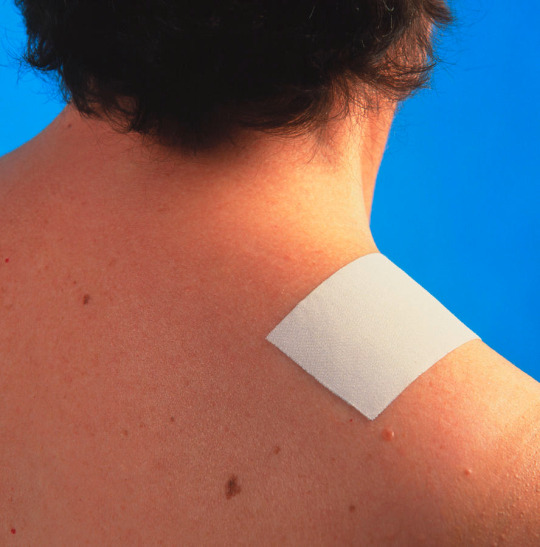
When it comes to managing localized pain, lidocaine is a commonly used topical anesthetic that comes in various forms, including creams and patches. Both are designed to numb the affected area and provide relief, but choosing between a lidocaine pain patch and lidocaine cream can depend on several factors such as the type, severity, and location of your pain.
What Is Lidocaine and How Does It Work?
Lidocaine is a local anesthetic that works by blocking nerve signals in the body. When applied topically, it helps reduce pain and discomfort in a targeted area. It is especially effective for surface-level pain or nerve-related conditions such as postherpetic neuralgia, arthritis, or muscle soreness.
Lidocaine Cream: Features and Uses
Lidocaine cream is a versatile and fast-acting option. It is usually applied directly to the skin and absorbed quickly, making it ideal for short-term relief of minor burns, insect bites, scrapes, and muscle aches. It's also often used before minor dermatological procedures.
Pros of Lidocaine Cream:
Quick onset of relief
Easy to apply and control dosage
Ideal for smaller or irregularly shaped areas
Useful for short-term or temporary pain
Cons:
May wear off quickly (typically within 1–2 hours)
Can be messy or inconvenient to reapply
Requires frequent application for ongoing pain
Lidocaine Pain Patch: Features and Uses
The lidocaine pain patch offers a more convenient and long-lasting option, especially for managing chronic or nerve-related pain. This adhesive patch slowly releases lidocaine over several hours, allowing for continuous relief without repeated application.
Pros of Lidocaine Pain Patch:
Provides sustained pain relief (up to 12 hours)
Simple and mess-free application
Ideal for larger or consistent pain areas like the lower back
Less need for reapplication throughout the day
Cons:
Slower onset compared to creams
May not conform well to certain body parts
Not suitable for open wounds or broken skin
Key Differences to Consider
1. Duration of Action:
Lidocaine patches offer long-lasting relief, while creams provide faster but shorter-term relief.
2. Application Area:
Creams are better for small, awkward, or flexible areas; patches work well for flat and larger surfaces.
3. Type of Pain:
The lidocaine pain patch is often preferred for chronic, nerve-related pain like neuropathy. Creams are useful for acute, short-term pain such as sunburn or itching.
4. Convenience:
Patches are more convenient for people who don’t want to reapply product frequently. Creams allow for more precise application but require more effort.
Which One Is Better?
The answer depends on your specific needs. If you are looking for long-lasting, consistent relief from nerve or chronic muscle pain, the lidocaine pain patch may be the better choice. On the other hand, if you need quick, short-term relief for a smaller area, lidocaine cream might be more suitable.
In conclusion, both forms of lidocaine can effectively reduce pain, but understanding their unique benefits can help you choose the right solution for your situation. Always consult a healthcare provider to ensure safe and proper use.
0 notes
Text
The Best Natural Alternatives to Tussin Cough Syrup
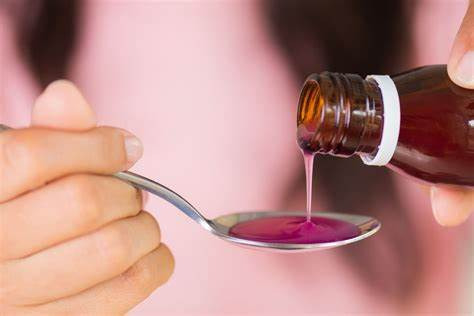
While many people rely on over-the-counter medications like tussin cough syrup for relief from cough and congestion, others prefer natural remedies that use ingredients found in nature. Whether due to sensitivity to medication, personal preference, or a desire to avoid synthetic ingredients, natural alternatives can offer soothing and effective results—especially for mild symptoms. These options work in various ways to reduce coughing, loosen mucus, and support the body’s healing process.
One of the most well-known natural remedies for cough is honey. Unlike tussin cough syrup, which typically combines a cough suppressant and an expectorant, honey naturally coats the throat, reducing irritation and calming the cough reflex. It is particularly effective for dry, tickling coughs and has mild antimicrobial properties. A spoonful of honey or mixing it with warm water and lemon can provide relief, especially before bedtime.
Ginger is another powerful natural option. It has anti-inflammatory and antioxidant properties that can soothe inflamed airways and relax the muscles in the respiratory tract. Ginger tea, made by boiling fresh slices of ginger in water, can help reduce coughing frequency and support overall respiratory health. Unlike tussin cough syrup, which often uses dextromethorphan to suppress coughs, ginger works by addressing the underlying inflammation and irritation.
Steam inhalation is a traditional remedy that helps relieve nasal congestion and reduce coughing, especially in wet coughs. Breathing in warm steam helps loosen thick mucus, much like the guaifenesin found in tussin cough syrup. Adding essential oils such as eucalyptus or peppermint can enhance the effect, thanks to their natural decongestant and antimicrobial properties.
Licorice root tea is another herbal remedy that acts similarly to tussin cough syrup. It helps to coat the throat and reduce inflammation, offering relief from dry and irritated coughs. It also has mild expectorant qualities, helping to break down mucus in productive coughs. However, people with high blood pressure should use licorice root cautiously, as it may raise blood pressure when consumed in large quantities.
For those looking to clear mucus naturally, thyme tea is an effective option. Thyme has antispasmodic and expectorant qualities, which make it helpful for calming coughs and clearing the chest. Drinking thyme tea or inhaling thyme-infused steam can mimic the mucus-loosening effects of tussin cough syrup without synthetic ingredients.
Additionally, turmeric has been used for centuries in traditional medicine for its anti-inflammatory and antibacterial properties. A warm turmeric drink with milk and honey can ease cough symptoms and support immune function.
In conclusion, while tussin cough syrup offers fast and convenient relief for both dry and wet coughs, natural alternatives can also be effective—especially for mild to moderate symptoms. Remedies like honey, ginger, steam inhalation, and herbal teas provide gentle support for the respiratory system without artificial additives. Whether used alone or alongside conventional medicine, these natural options give individuals more control over their health and wellness journey.
0 notes
Text
The Difference Between Tussin Cough Syrup and Other Cough Medications
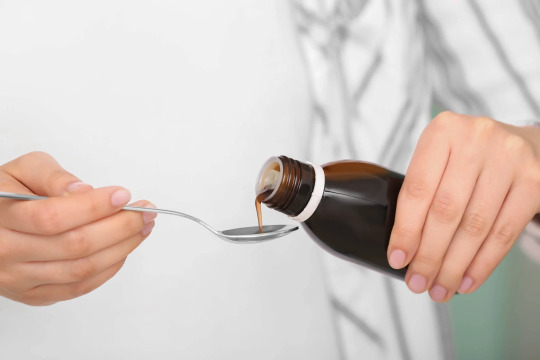
Coughs are a common symptom of various respiratory conditions, and choosing the right medication can significantly affect how quickly and comfortably one recovers. Among the many options available, tussin cough syrup stands out for its balanced formula and targeted action. Understanding how tussin cough syrup compares to other cough medications can help individuals make better-informed decisions for symptom relief.
Tussin cough syrup is generally formulated to provide multi-symptom relief. Most versions include guaifenesin, an expectorant that helps to thin and loosen mucus in the airways. This allows individuals to clear phlegm from their lungs more easily, reducing chest congestion. In contrast, some cough medications are designed only to suppress coughing without addressing the underlying mucus buildup. While these single-purpose medications may stop the cough temporarily, they can sometimes trap mucus in the lungs, potentially prolonging the illness.
Another key ingredient often found in tussin cough syrup is dextromethorphan, a non-narcotic cough suppressant. This ingredient targets the brain’s cough center to reduce the reflex that causes coughing. Many other cough medications also include dextromethorphan, but not all combine it with an expectorant like guaifenesin. This makes tussin cough syrup more effective for treating both dry and productive coughs, depending on the specific formulation.
Decongestants are another area where tussin cough syrup and other medications can differ. Some versions of tussin include phenylephrine or a similar nasal decongestant, which helps relieve sinus pressure and nasal congestion. This contrasts with basic cough syrups that may not offer any relief for nasal symptoms, forcing consumers to buy multiple products to address all their discomforts. The all-in-one approach of tussin cough syrup is often more convenient and cost-effective.
In terms of safety, tussin cough syrup is considered suitable for most adults and older children when taken as directed. Some alternative medications may contain codeine, a stronger narcotic cough suppressant. While effective, codeine-based products come with a higher risk of side effects such as drowsiness, dizziness, and dependency. Tussin, by contrast, avoids these risks by using non-narcotic ingredients.
Tussin cough syrup also tends to have fewer interactions with other medications compared to more complex or prescription-strength cough treatments. It is widely available over the counter, making it an accessible choice for quick symptom management without needing a doctor’s visit.
One final difference is in formulation and flavor. While this may seem minor, palatability can influence how consistently people take their medication. Tussin cough syrup is often available in pleasant flavors that make it easier to ingest, especially for children and sensitive adults.
In conclusion, tussin cough syrup differs from other cough medications in its balanced and multi-symptom formula, combining expectorant, suppressant, and sometimes decongestant properties. Its non-narcotic nature, effectiveness, and convenience make it a preferred option for many seeking comprehensive cough and congestion relief.
0 notes